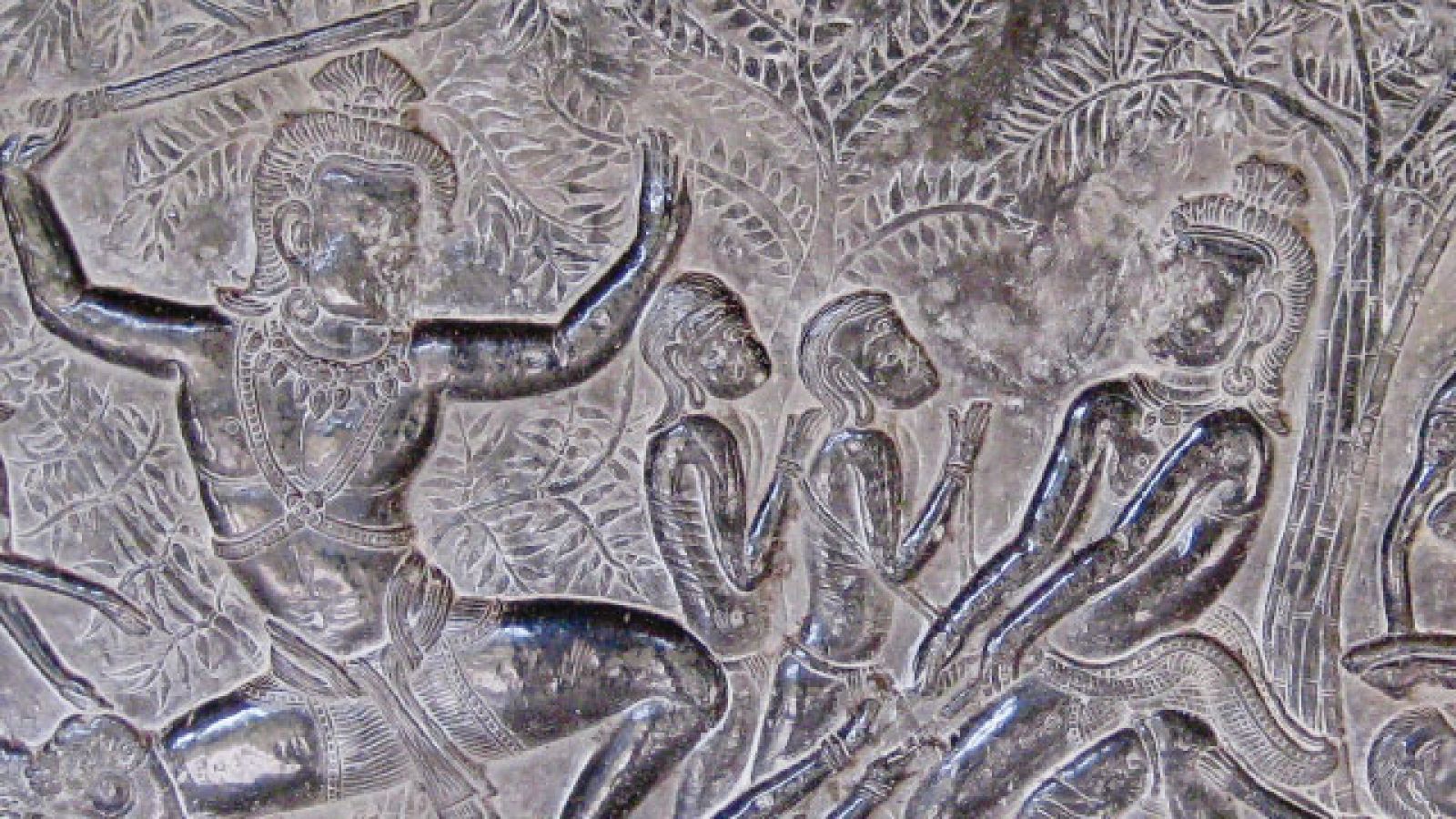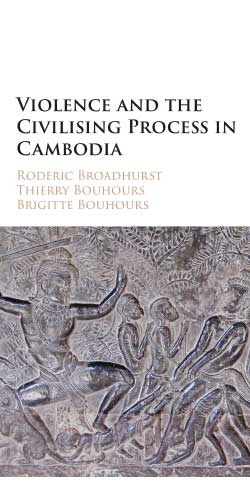ANU criminologists examine history of violence in Cambodia

Detail of the cover image of the ANU criminologists' book. Image/Cambridge University Press
A new book by ANU scholars examines how violence in Cambodia has gradually declined over the decades from the French colonial period to today, despite the genocide and mass murders by the Khmer Rouge in the 1970s.
Violence and the Civilising Process (CUP, 2015) by Roderic Broadhurst, Thierry Bouhours and Brigitte Bouhours is based on extensive field work in the southeast Asian nation including interviews with Cambodian citizens, police officers, and examinations of crime scenes.
“What we would argue, based on our research, is that there has been a cascading decline in collective and interpersonal violence over that 150 year period, but it’s had periodic surges in what the theoretician [Norbert] Elias would call ‘counter spurts’ which are insurrections, violent conflicts, civil wars and war itself,” Broadhurst, a Professor of Criminology, says.
The Khmer Rouge regime is the “obvious counter spurt” to the taming of violence, which the authors call one of the most lethal genocides in human history.
Professor Broadhurst, who first visited the Thai-Cambodia border in 1971, began researching the topic in the 1990s and received ARC funding in 2006. His team conducted interviews mostly in Cambodia, but also neighbouring Vietnam with Vietnamese soldiers who’d fought the Khmer Rouge.
“We did several formal household surveys [of] some 5-5,500 households, and asked them about their experiences of crime, corruption – what we would call crime victim surveys, and these were United Nations surveys, supported by [Australian agency] AusAID,” Professor Broadhurst recalls.
“We also went to many local police stations. We’d talk to them about their current crime situation and the crimes that worried them most.”
“In addition to asking households about being victims of crime, we’d analyse police and newspaper reports which were often fragmentary, unless they were homicides.”
The authors write that their study of crime and violence in contemporary Cambodia “support the theoretical associations between the development and expansion of the state, growing sensitisation to violence and the deepening of the chains of inter-dependence in the reduction in violence.”
Part of that process included the ruling Cambodian People’s Party elimination of rivals and consolidating its position, the death of Pol Pot in 1998 and other Khmer Rouge members defecting or quitting their fight.
“The government could then focus on disarming the population, and evidence suggests that the firearms collection program contributed to the significant reduction in the prevalence of lethal violence in Cambodia between 1993 and 2008 as well as the reduction in the number of victims in such events,” they write.
“Our results show that both co-offending and multiple victimisation have declined significantly since the 1990s in contemporary Cambodia, which supports the predictions of modernisation and civilising process theories regarding the monopolisation of violence by the state and the individualisation of violence.”
Such theories include that people who were desensitised to violence during war become sensitised to violence in peacetime, and find it shameful.
“People can now see a future,” Professor Broadhurst says.
